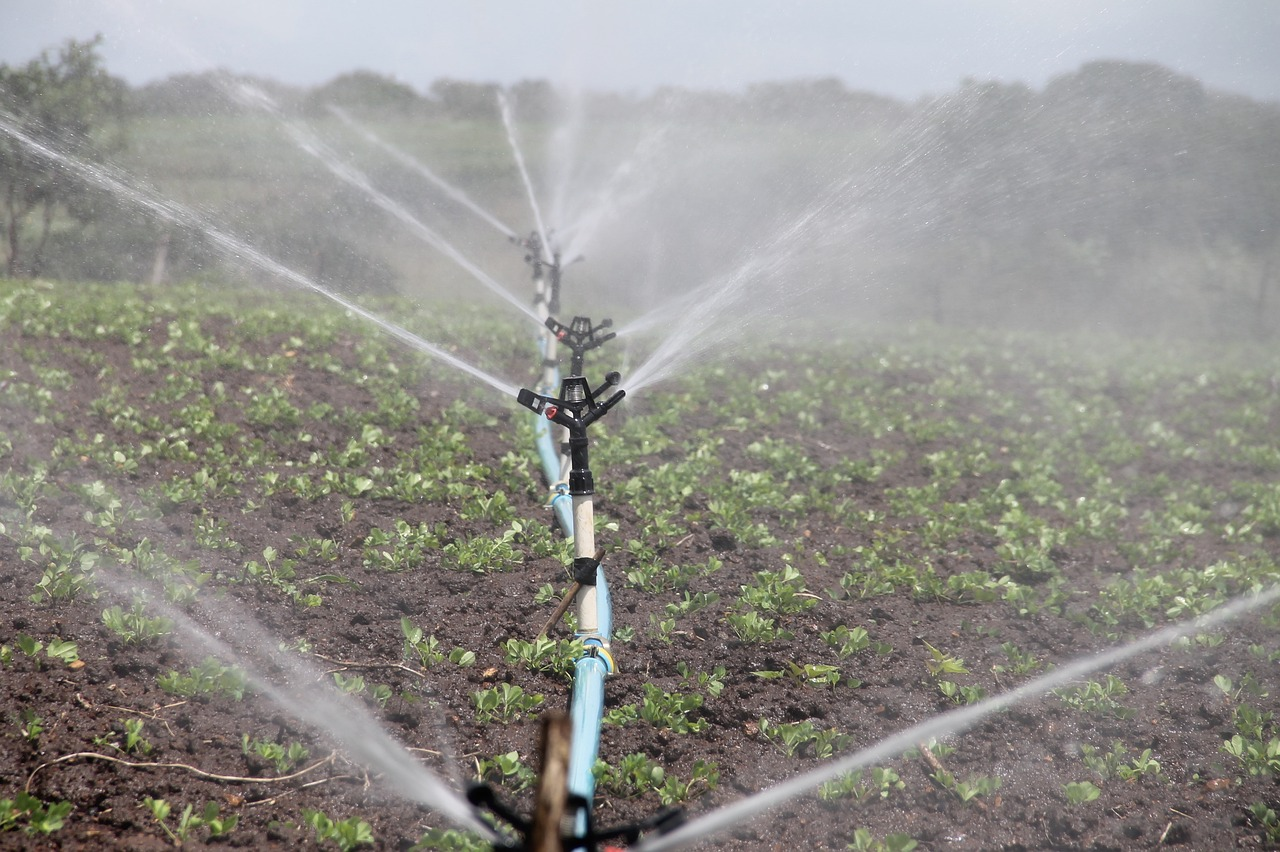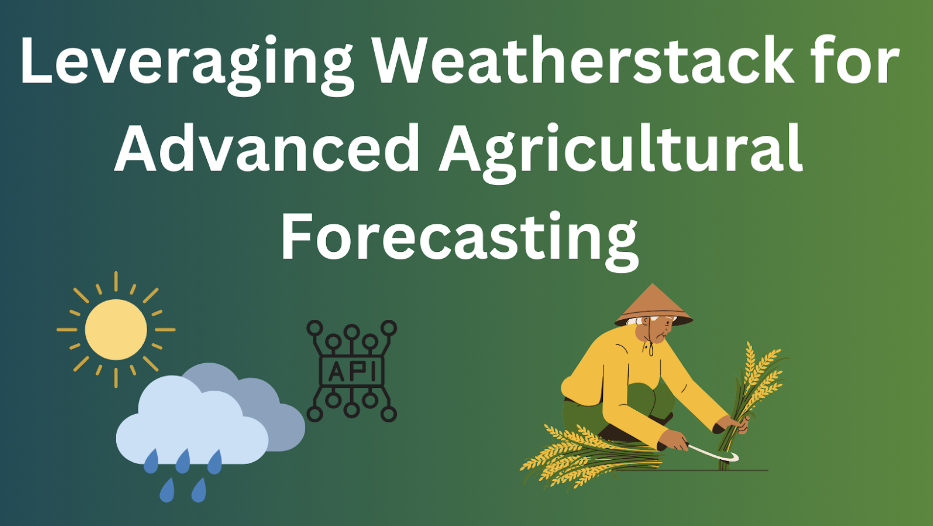Nearly 70% of freshwater worldwide is used for agriculture, and this makes weather forecasting critically important for efficient water management and crop production. Accurate weather forecasting, such as that provided by Weatherstack’s comprehensive weather API, is important for farmers to make decisions regarding irrigation, planting, and harvesting. Even though Weatherstack API is not specifically an agricultural weather API, it gives real-time weather data, forecasts, and historical weather insights, which helps farmers customize their agricultural practices to the expected weather conditions. In this article, we will discuss how weatherstack helps in advanced agricultural forecasting.
Table of Contents
What is Weatherstack API?
Weatherstack API offers real-time, historical, and forecasted weather data for nearly every location on Earth. It provides details such as real-time weather conditions using real-time weather data API and historical weather data using historical weather data API. Similarly, it also provides weather forecasts using API’s forecast feature as well.
Moreover, you can also get information on the air quality and astronomy data like sunrise/sunset times and moon phases. This API serves a wide audience, including developers integrating weather data into applications and individuals seeking detailed weather information for personal use. Additionally, businesses look to enhance their products or services with weather-related features.
Why is Weatherstack API Better Than Other Weather APIs?
When selecting a weather API, it’s important to compare different API options, especially when considering climate adaptation strategies for agriculture. Here are some reasons why weatherstack API stands out from other weather APIs.
Accuracy and Reliability
Weatherstack API gets information from a wide network of data sources, such as multiple weather stations. This ensures accuracy by reducing dependency on any information source that might be incorrect. Similarly, they actively monitor these sources for consistency and accuracy, and this increases the reliability of the data provided.
Comprehensive Global Coverage
Unlike many other weather APIs, weatherstack offers global coverage, which means it can give weather information for nearly any place. This makes it great for international projects without needing to use different APIs for various regions.
Ease of Use and Flexibility
Moreover, weatherstack APIs are built to be user-friendly and feature clear and easy-to-follow documentation. This way, it is simpler for developers to integrate the API into their projects and reduces the time and effort needed to learn how to use it effectively.
Challenges Faced by the Agricultural Sector Due to Inadequate Forecasting

In agriculture, bad weather forecasts cause several problems. The first is it makes it hard for farmers to decide when to plant, water, or deal with pests. This can lead to lower crop yields and less food.
Likewise, farmers face economic issues due to poor forecasting as well. Some scenarios are sudden extreme weather like floods, droughts, and heat waves, which can ruin crops, causing less income and potential debt. It also disrupts food markets, which causes price changes and possible shortages. Plus, more loss due to weather means higher insurance costs, and that adds financial stress for the farmers.
Now, let’s look at some examples of regions and crops that face problems due to current weather forecasting limitations. Regions like Sub-Saharan Africa and South Asia are at higher risk because their weather is unpredictable, and they lack advanced forecasting technology.
Likewise, crops such as fruits, vegetables, coffee, and tea need specific weather conditions to thrive. When forecasts are incorrect, it messes up when to do farming tasks and hurts crop health, which again results in less growth and yield.
In What Ways Can Weatherstack API Support Climate Adaptation Strategies in Agriculture?
As mentioned previously, climate change poses significant challenges to agriculture. This brings up the need for effective climate adaptation strategies. The weatherstack API significantly helps agriculture by offering support in several key ways.
First of all, the historical weather data API from Weatherstack allows farmers and stakeholders to get detailed weather records from the past. This helps them see climate trends and predict what the weather might be. With this information, they can make smart choices about what crops to plant, when to plant them, and how to use resources, and that leads to planning crop cycles that can handle changing weather and keep food growing steadily.
Similarly, Weatherstack helps farmers select the best crops for their region and time. It considers factors given by precision agriculture weather API, such as temperature, rainfall, and pests, and that ensures that the crops are placed where they will survive. This minimizes the risk of crop failure by choosing varieties that can handle the expected weather conditions.
Additionally, with the help of weather forecasts and historical water data such as precipitation, the Weatherstack API assists farmers in smart water management. It saves water by irrigating only when necessary. Also, they will plan for droughts with efficient methods and avoid excessive watering to protect the soil and nutrients. This overall encourages sustainable farming practices as well.
How Can Weatherstack API Optimize Crop Planting Schedules?

Choosing the right time to plant is important for a successful harvest. Even though The weatherstack API is not an agricultural forecasting API itself, it helps farmers by providing past weather data and future forecasts. This information lets them pick the best planting times, leading to better crop yields and lower risks.
Here are three ways to use the data from Weatherstack API to determine the ideal planting time.
- Look at past weather data to identify average planting windows.
- Adjust planting dates based on seasonal forecasts.
- Consider even the smallest climate variations given by the API to get the best planting times.
The weatherstack API equips farmers with valuable tools for agricultural risk management as well. It provides alerts for extreme weather like frost, hail, and heavy rain. This allows farmers to delay planting to protect their crops. Moreover, by combining pest and disease forecasts with weather data, farmers can avoid bad planting times and take preventive measures.
Weatherstack API makes farming smarter and more productive. It predicts when crops will grow and gives weather forecasts for each agricultural location. This helps automate tasks like making planting schedules and sending out weather warnings. This makes farming easier and more efficient.
What Role Does Weatherstack API Play in Effective Irrigation Management?

The Weatherstack API helps farmers water their crops in the right amount. It looks at the weather forecast to tell farmers when it will rain so they don’t water their crops unnecessarily.
Similarly, it checks old weather reports to help predict dry periods, which helps the farmers plan their watering better. Plus, the API figures out exactly how much water different crops need. It does this by looking at how much water the air and soil around the crops are taking away, which is called evapotranspiration, and what the weather will be like. This way, farmers can use water more wisely, which saves water and makes sure their crops grow well without wasting water.
Additionally, the weatherstack API helps farmers with drought management by providing early drought forecasts, and this enables strategies like using drought-resistant crops and reducing the amount of seeds planted.
Moreover, integration with soil moisture sensors offers real-time insights into soil conditions, and this prevents overwatering.
Furthermore, as mentioned, the API calculates crop water deficits based on weather data, which optimizes water use efficiency during droughts and ensures sustainable and efficient farming practices.
How Does Weatherstack API Influence Harvest Timing for Maximum Benefit?

The Weatherstack API helps farmers decide the best time to harvest their crops by providing important weather data and forecasts. This information helps farmers keep their crops in good shape and reduce losses when it’s time to get the yield. The API can tell when crops are just right to harvest, which ensures they taste and look their best. It also warns farmers about bad weather or times when pests and diseases might be a big problem, and it helps them choose the right time to harvest and cut down on waste after picking.
The weatherstack API keeps crops in the best condition. It forecasts the weather for upcoming seasons, which helps farmers in planning. This planning includes arranging workers, trucks, and storage in advance. Such preparation ensures a smooth harvest process. The API predicts crop drying times as well.
Similarly, It also provides detailed forecasts for different fields. This helps farmers use resources efficiently by preventing waste. By timing the harvest with weather and market demands, farmers optimize sales prices as well. This strategy reduces waste and increases profits, which also enhances work management for farmers.
Discover advanced agricultural forecasting with Weatherstack—visit our website and start integrating the API for industry-leading insights.
Conclusion
Overall, the Weatherstack API helps farmers by giving them weather updates so they can make smart choices about their crops. It tells them the best times to water, pick, and take care of their plants to grow better food and lose less of it due to bad weather or pests. It also helps them plan how many people they need to help with the harvest and how to keep their crops safe after picking. Using weatherstack means farmers can grow more food, waste less, and make more money by selling their crops at the right time.
FAQs
Can weatherstack API be used for both large-scale farming and small-scale agricultural operations?
Yes, weatherstack API is versatile and can be tailored to meet the forecasting needs of both large-scale agricultural enterprises and small-scale farmers. It offers accurate weather data important for optimizing farming practices and improving crop yield.
How does weatherstack API improve the accuracy of agricultural forecasting?
Weatherstack API delivers real-time, historical, and forecasted weather data from a comprehensive network of global sources. This enhances agricultural forecasting accuracy by enabling precise planning and decision-making based on reliable weather information.
Is technical expertise required to integrate weatherstack API into existing agricultural management systems?
Basic technical knowledge is important, but the Weatherstack API is designed for easy integration into agricultural systems. Extensive documentation and support are available to assist users of all skill levels as well. This ensures a smooth adoption process for improving forecasting and decision-making in agriculture.

